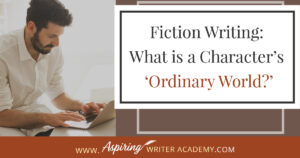The Ultimate List of Book Genres: 95+ Popular Genres & Subgenres

In this blog post, The Ultimate List of Book Genres: 95+ Popular Genres & Subgenres, we will cover some of the many book genres and subgenres available. We hope that this post can assist you in choosing a genre that matches your writing style and can help you along in your writing journey.
Most Popular Fiction Genres
- Literary Fiction
- Contemporary Fiction
- Romance
- Historical Fiction
- Thriller and Suspense
- Horror
- Mystery
- Action & Adventure
- Science Fiction
- Fantasy
- Paranormal
- Western
- Dystopian
- Utopian Fiction
- Chick Lit
- Christian
- Speculative Fiction
- Magic Realism
- LGBTQ+
- Satire Fiction
- Holiday Fiction
- Graphic Novel
- Short Story
- Young Adult
- New Adult
- Middle Grade
- Children’s
- Women’s Fiction
Most Popular Nonfiction Genres
- Biography
- Historical Nonfiction
- Self-Help
- Travel
- True Crime
- Parenting
- Memoir and Autobiography
- Narrative nonfiction
- Cookbooks
- Religion and Spirituality
- Philosophy
- Art and Photography
- Humor
- How-to and DIY
- Poetry
Understanding the genre you intend to write before starting your book is important for several reasons:
- Reader Expectations: Each genre has its unique set of conventions, themes, and tropes that readers anticipate. Knowing your genre allows you to meet these expectations and keep your readers happy. Readers who pick up a mystery novel, for example, expect a puzzle to be solved, while fantasy readers anticipate magical worlds. If you kill off the main character in a romance novel fans may be ready to riot against you.
- The Marketability Of Your Books: Publishers, agents, and booksellers rely heavily on genre categorization to market and sell books. For self-publishing authors, also need to know their genre so they can target their marketing to get their book in front of the correct audience.
- Writing Guidelines: Different genres often come with specific writing guidelines. Romance novels, for instance, have certain conventions regarding character development and the central romantic plot. Understanding these guidelines can help structure your story effectively.
- Reader Engagement: Readers often choose books based on their preferred genres. If you know your genre, you can tailor your writing to resonate more deeply with your target audience, increasing the chances of reader engagement and positive reviews.
- Competitive Edge: The publishing industry is highly competitive. Knowing your genre allows you to identify your competition and differentiate your work. It helps you find a unique angle or twist that sets your book apart from others in the same genre.
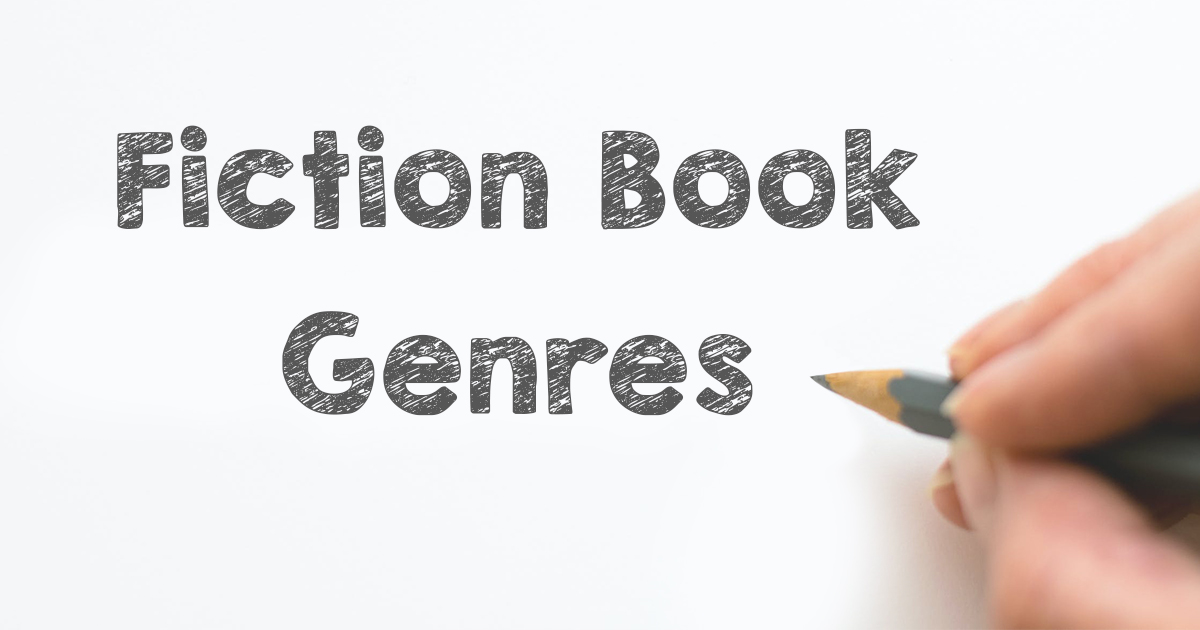
Fiction Book Genres
Literary Fiction
Literary fiction is a genre characterized by its focus on more artistic storytelling. It delves into profound themes that show the human experience through stories primarily centered around complex characters. Literary fiction focuses more on the narrative structure and quality of writing rather than plot-driven stories. Literary fiction tends to challenge conventional storytelling norms and may not always follow genre norms, making it more unpredictable and open to interpretation, whereas popular fiction follows more of a set structure where the plot moves the story forward. Popular fiction has more emphasis on fast-paced storytelling, entertainment, and meeting genre-specific expectations. Literary Fiction is often a more open-ended exploration of storytelling that aims to be thought-provoking rather than entertaining.
Contemporary Fiction
Contemporary fiction focuses on the challenges and predicaments faced by the protagonist in relatable real-world experiences. Contemporary fiction places its characters in the midst of the challenges of everyday life in the contemporary era. These narratives often revolve around the intricacies of relationships, workplace dynamics, and the pursuit of personal and professional fulfillment, all set against the backdrop of the modern world.
This genre overlaps with others such as Contemporary Romance or Contemporary Fantasy. It primarily serves as a classification showing that the story unfolds in the present day.
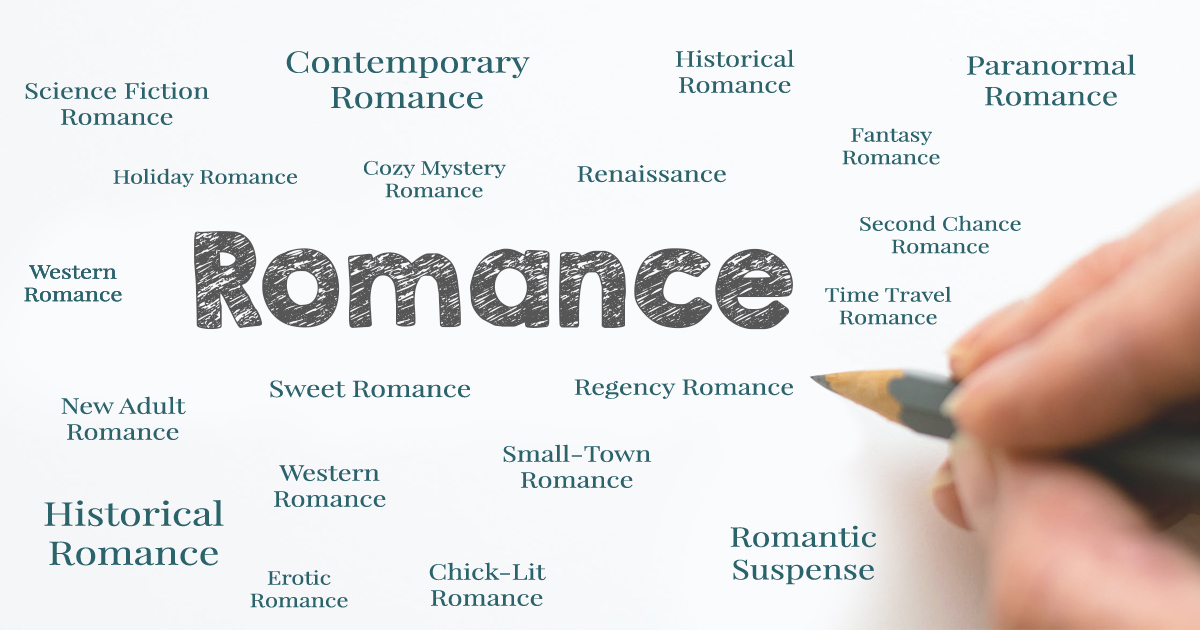
Romance
Romance novels focus on the development of romantic relationships between characters and explore themes of love, passion, and emotional connection. In the romance genre, the core of the story revolves around the romantic relationship, with the love between characters taking center stage. Romance novels are well known for their depiction of sensual tension, and desire, and many feature explicit intimate encounters. This genre, like others, comes with distinct reader expectations. With the number one reader expectation of a "happily ever after" ending. Readers want things to work out for the romantic couple.
There are different heat levels in romance books such as sweet, warm, sensual, spicy, and erotic.
Romance frequently serves as a subplot within many novels, often playing a complementary role in the story. In books where romance functions as a subplot, the central storyline remains separate, focusing on matters unrelated to the romantic relationship. Instead, the presence of romance contributes to the overall plot, injecting elements of conflict or intrigue.
Popular Romance Subgenres
- Contemporary Romance: Set in modern times, these stories focus on love and relationships in today's world.
- Historical Romance: These romances are set in a historical time period, often featuring historical events, settings, and cultural nuances.
- Regency Romance: A subset of historical romance, Regency romances are specifically set in the early 19th century during the British Regency era.
- Paranormal Romance: Combining elements of the supernatural with romance, these stories often involve vampires, werewolves, witches, and other paranormal creatures in romantic plots.
- Fantasy Romance: Set in fantastical worlds, these stories blend romance with elements of high fantasy, magic, and mythical creatures.
- Science Fiction Romance: These romances are set in futuristic or science fiction settings, often exploring love in space or in technologically advanced societies.
- Erotic Romance: Known for their explicit and sensual content, erotic romances focus on the physical aspects of romantic relationships.
- Romantic Suspense: These stories combine romance with elements of suspense and intrigue, often featuring protagonists dealing with danger or mystery.
- Chick-Lit Romance: Centered on the lives and romantic experiences of young women, chick lit often includes humor and a focus on personal growth.
- New Adult Romance: Geared towards readers in their late teens to early twenties, these romances explore the challenges of transitioning into adulthood.
- Clean Romance: These romances emphasize emotional connections and love stories without explicit content or mature themes.
- Multicultural Romance: Celebrating diverse backgrounds and cultures, these stories feature characters from various ethnicities and backgrounds.
- Second Chance Romance: Often involving reunited lovers or couples getting a second shot at love, these romances explore themes of forgiveness and redemption.
- Sports Romance: Set in the world of sports, these stories often feature athletes and the challenges they face in relationships.
- Small-Town Romance: These romances are set in close-knit communities, emphasizing the charm of small towns and the connections between residents.
- Holiday Romance: Typically centered around holidays like Christmas, these stories explore love and romance in festive settings.
- Amish Romance: Set in Amish communities, these romances delve into the unique customs and traditions of the Amish way of life.
- Romantic Comedy: Combining romance with humor, these stories focus on lighthearted and funny romantic situations, often leading to comedic misunderstandings and happy endings.
- Christian Romance: These romances incorporate Christian faith and values into love stories, often exploring themes of faith, redemption, and the power of love.
- Cozy Mystery Romance: Blending romance with the cozy mystery genre, these stories involve amateur sleuths solving mysteries while navigating romantic relationships.
- Western Romance: Set in the American West, these romances capture the spirit of the frontier and often involve rugged cowboys and strong-willed heroines finding love on the open range.
- Billionaire Romance: Featuring wealthy protagonists, these romances often involve characters from different socioeconomic backgrounds finding love.
- Gothic Romance: Rooted in the gothic tradition, these romances often feature dark, mysterious settings, old mansions, and elements of the supernatural or the macabre, all intertwined with passionate love stories.
- Time Travel Romance: Characters in these stories navigate love across different time periods, often involving time travel or historical elements.
- Mail-Order Bride Romance: These stories explore relationships that begin with arranged marriages or agreements, often set in historical or Western settings.
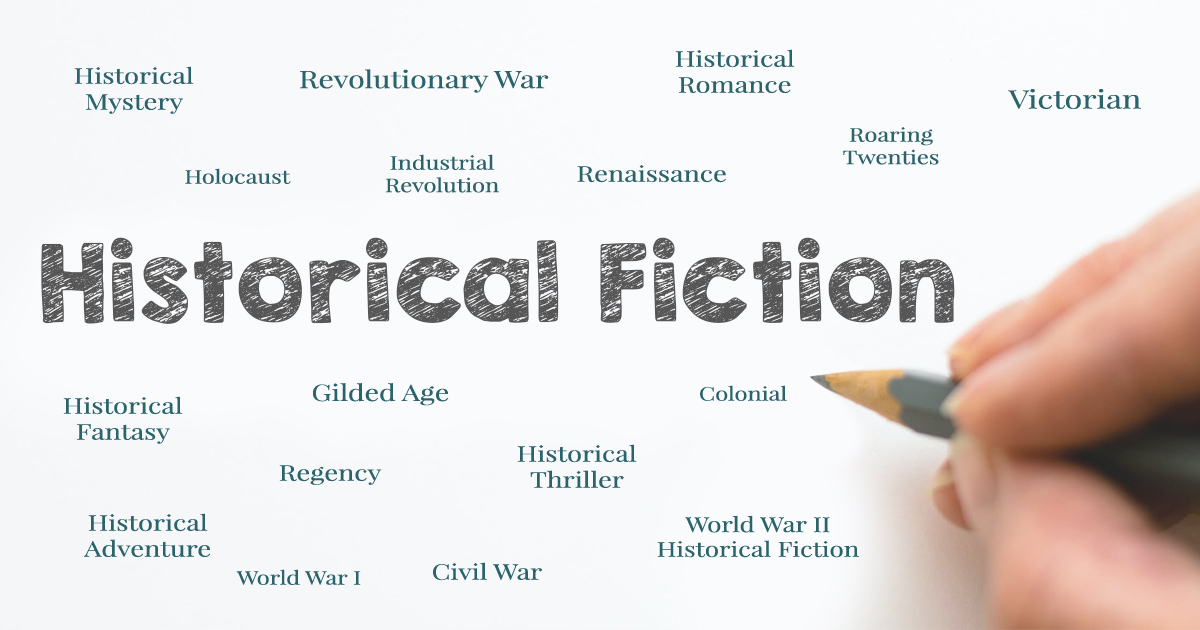
Historical Fiction
Historical fiction, blends historical events, locations, and people into a fictional story. These stories unfold against the backdrop of real historical periods, yet authors introduce alterations and changes. For example, the main character in the story may be someone who never existed or some things may happen a bit differently. Some stories have real people who exist in the background of the story or these made-up fictional characters may interact with real historical figures.
Popular Historical Fiction Subgenres
- Historical Romance: Combining historical settings with romantic storylines, these novels focus on love and relationships within a historical context.
- Historical Mystery: These stories blend historical settings with mystery plots, often involving amateur sleuths solving crimes in the past.
- Historical Adventure: Combining historical accuracy with thrilling adventures, these novels often feature explorers, pirates, or adventurers in historical settings.
- Historical Fantasy: Merging historical settings with elements of fantasy, such as magic, mythical creatures, or supernatural events.
- Historical Thriller: Intense and suspenseful narratives set in the past, often involving espionage, intrigue, or high-stakes conflict.
- Historical War Fiction: Focusing on the events, characters, and impact of wars throughout history, such as World War II or the American Civil War.
- Historical Biographical Fiction: These books fictionalize the lives of real historical figures, offering readers a narrative exploration of their experiences.
- World War I Fiction: Focusing on the events, characters, and impact of World War I, including the challenges and sacrifices made during this tumultuous period.
- World War II Historical Fiction: Centered on the events of World War II, these stories provide a window into the lives of individuals affected by the war.
- Ancient Historical Fiction: Set in ancient civilizations like Rome, Greece, or Egypt, these novels transport readers to distant historical eras.
- Medieval Historical Fiction: These stories are set in the medieval period, often featuring knights, castles, and feudal society.
- Regency Historical Fiction: Specifically set in the early 19th century during the British Regency era, these novels often involve societal norms and aristocratic life.
- Civil War Historical Fiction: Focused on the American Civil War, these stories explore the lives of individuals caught in the midst of this historic conflict.
- Victorian Historical Fiction: Set during the Victorian era, these novels capture the social and cultural dynamics of the 19th century.
- Tudor Historical Fiction: Centered on the Tudor dynasty in England, these stories often revolve around the reigns of monarchs like Henry VIII and Elizabeth I.
- Colonial Historical Fiction: These narratives transport readers to the early days of colonial America, exploring the challenges and triumphs of settlers.
- Nautical Historical Fiction: Set on the high seas, these novels often feature sailors, pirates, or naval adventures in historical settings.
- Renaissance Historical Fiction: Set during the Renaissance period, these stories explore the artistic, cultural, and political developments of the time.
- Prehistoric Historical Fiction: These novels are set in prehistoric eras, featuring early human societies and their struggles for survival.
- Rural Historical Fiction: Often set in rural or agricultural communities, these stories highlight the lifestyles and challenges of the countryside.
- Colonial and Postcolonial Fiction: Examining the effects of colonization and its aftermath in various regions of the world.
- Industrial Revolution Historical Fiction: Set during the Industrial Revolution, these narratives delve into the societal changes brought about by technological advancements.
- Holocaust Historical Fiction: Focused on the Holocaust during World War II, these stories offer a poignant look at the experiences of survivors and victims.
- Roaring Twenties Historical Fiction: Set in the 1920s, these novels capture the vibrancy and societal shifts of the Jazz Age.
- Historical Family Saga: Multigenerational stories that follow a family or lineage through different historical periods.
- Pirate Fiction: Stories centered on pirates and their adventures, often taking place during the Golden Age of Piracy.
- Gilded Age Fiction: Set in the late 19th century, during the Gilded Age in the United States, exploring the social, economic, and cultural dynamics of this era of rapid industrialization and wealth accumulation.
- Revolutionary War Historical Fiction: Centered on the American Revolutionary War, these stories explore the struggles for independence.
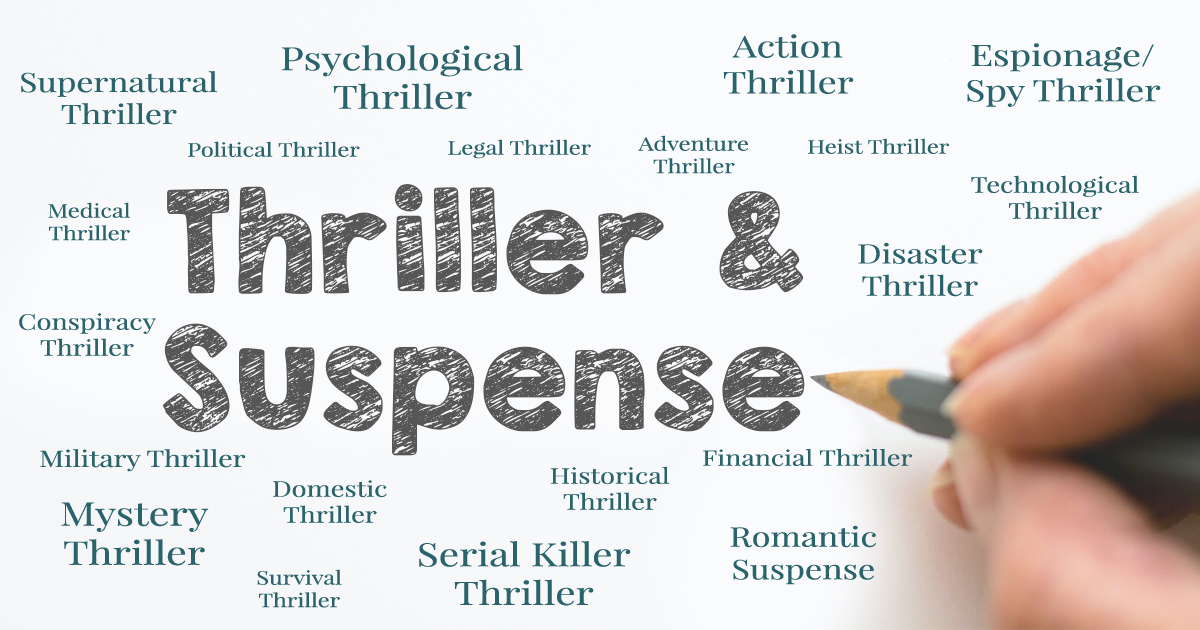
Thriller and Suspense
Thriller is also interchangeably referred to as suspense. This genre also is often a big part of the Mystery, Crime, and Horror genres. Thriller fiction usually centers on a protagonist's desperate struggle for self-preservation or survival rather than a quest to rescue others. This genre is infused with rapid pacing and an abundance of action. Thrillers are renowned for their abundance of gripping cliffhangers. These stories are crafted to bring out emotions of curiosity, apprehension, suspense, dread, anxiety, and tension.
Popular Thriller and Suspense Subgenres
- Psychological Thriller: These novels delve deep into the human psyche, exploring the psychological aspects of suspense and tension.
- Legal Thriller: Set in the legal world, these stories often involve lawyers, courtroom drama, and legal conflicts.
- Political Thriller: These thrillers revolve around political conspiracies, power struggles, and government intrigue.
- Espionage/ Spy Thriller: Focused on espionage and espionage agents, these stories feature covert operations, international intrigue, and spies in action.
- Mystery Thriller: Combining elements of mystery and suspense, these novels involve solving complex puzzles and uncovering hidden truths.
- Medical Thriller: These thrillers are set in the medical field, often involving medical professionals dealing with life-and-death situations and medical mysteries.
- Techno-Thriller: Centered on technology and its potential dangers, these stories often explore cybersecurity, hacking, and futuristic technology.
- Conspiracy Thriller: These novels involve intricate conspiracies, cover-ups, and protagonists trying to unravel hidden plots.
- Supernatural Thriller: Combining elements of the supernatural with suspense, these stories often feature paranormal phenomena and eerie mysteries.
- Historical Thriller: Set in the past, these thrillers incorporate historical events, settings, and mysteries.
- Domestic Thriller: These stories revolve around suspenseful events happening within a family or household, often exploring secrets and hidden dangers.
- Serial Killer Thriller: Focused on the pursuit of serial killers, these novels involve intense investigations and cat-and-mouse games between law enforcement and killers.
- Military Thriller: These thrillers are set in military environments and often involve military operations, special forces, and high-stakes combat.
- Heist Thriller: Centered on elaborate heists and thefts, these stories involve intricate planning and high-risk criminal activities.
- Technological Thriller: Exploring the potential dangers of technology, these novels often involve cyber threats, artificial intelligence, and futuristic scenarios.
- Adventure Thriller: These thrillers combine elements of adventure with suspense, often featuring protagonists on thrilling quests or expeditions.
- Financial Thriller: Set in the world of finance, these stories involve financial crimes, corporate intrigue, and high-stakes financial dealings.
- Art and Artifact Thriller: These novels revolve around the theft, recovery, or pursuit of valuable artworks or historical artifacts.
- Environmental Thriller: Focused on environmental issues and disasters, these stories often involve ecological threats and the race to prevent or mitigate them.
- Survival Thriller: These thrillers feature characters facing extreme survival situations, often in remote or hostile environments.
- Disaster Thriller: These novels focus on catastrophic events such as natural disasters, pandemics, or apocalyptic scenarios, exploring the survival and response efforts.
- Action Thriller: Infused with high-octane action sequences, these stories involve intense physical confrontations, chases, and adrenaline-pumping situations.
- Religious Thriller: Often blending elements of religion and the supernatural, these thrillers delve into religious mysteries, artifacts, or conflicts.
- Forensic Thriller: Centered around forensic experts, these novels involve the scientific investigation of crimes, often featuring detailed analysis and crime-solving techniques.
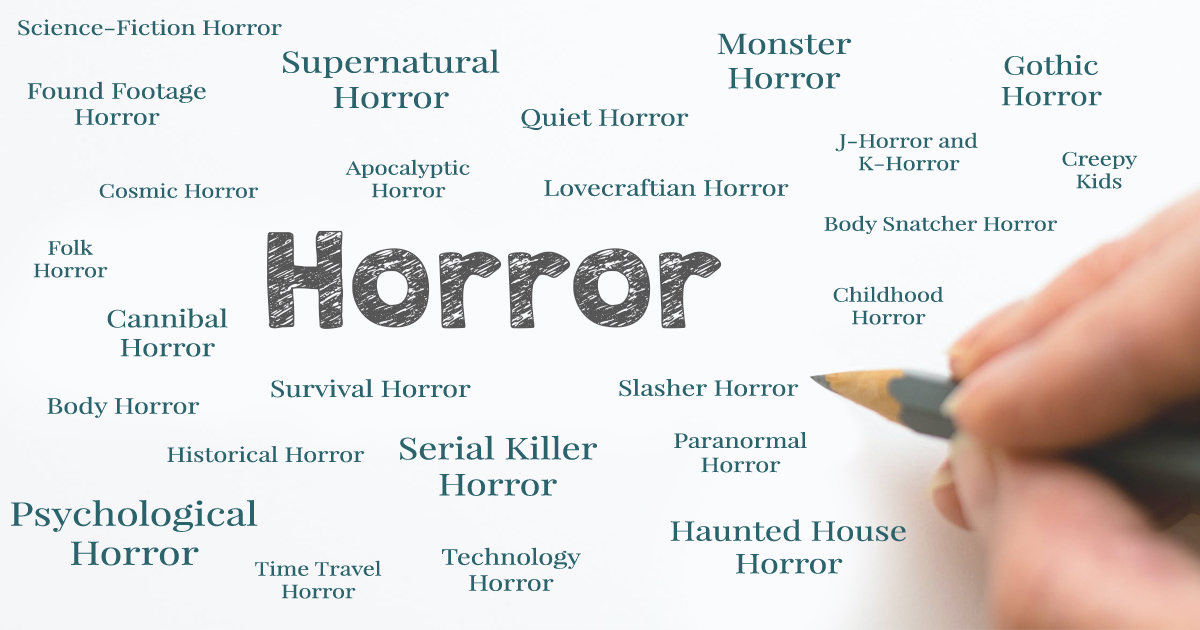
Horror
The horror genre aspires to evoke fear, dread, and spine-tingling unease in its readers. The Horror genre is characterized by stories that delve into the darkest corners of human imagination, often featuring supernatural entities, evil forces, monsters, and killers. Within this genre, authors skillfully craft tales of suspense, terror, and psychological torment, inviting readers to confront their deepest fears. Horror novels explore the unknown, delving into themes of mortality, the supernatural, and the human capacity for cruelty and human resilience in the face of terrifying circumstances. This genre taps into primal fears and keeps readers on the edge of their seats, leaving a memorable mark on readers long after finishing reading the story.
Popular Horror Subgenres
- Supernatural Horror: Featuring supernatural elements like ghosts, demons, and otherworldly entities, these stories often explore the unknown and the unexplainable.
- Psychological Horror: Centered on the human psyche, these narratives delve into the darkest recesses of the mind, often blurring the line between reality and madness.
- Gothic Horror: Rooted in Gothic literature, these stories are characterized by gloomy settings, eerie atmospheres, and themes of decay and ancestral curses.
- Body Horror: These narratives focus on grotesque and disturbing transformations of the human body, often involving mutations, disease, or mutilation.
- Survival Horror: Typically set in isolated or dangerous environments, these stories follow characters as they struggle to survive against horrifying threats.
- Lovecraftian Horror: Inspired by the works of H.P. Lovecraft, these stories often feature cosmic horror, eldritch creatures, and the insignificance of humanity in the face of vast, malevolent forces.
- Monster Horror: Centered on monstrous creatures, these narratives feature creatures like vampires, werewolves, zombies, and other terrifying beings.
- Haunted House Horror: These stories revolve around malevolent spirits or entities haunting a specific location, often leading to psychological torment for the inhabitants.
- Found Footage Horror: Presented as if filmed by the characters themselves, these stories provide a sense of realism and immediacy, often involving supernatural or paranormal encounters.
- Folk Horror: Rooted in folklore and rural settings, these stories explore ancient and pagan rituals, often revealing hidden horrors within secluded communities.
- Cosmic Horror: Expanding upon Lovecraftian themes, cosmic horror delves into the insignificance of humanity in a vast and uncaring universe, often featuring incomprehensible cosmic entities.
- Serial Killer Horror: Focused on the pursuit of serial killers, these narratives delve into the psychological and forensic aspects of crime, often involving intense cat-and-mouse games.
- Body Snatcher Horror: These stories often feature the invasion or replacement of human bodies by alien or parasitic entities, leading to paranoia and mistrust.
- J-Horror and K-Horror: Originating from Japan (J-Horror) and Korea (K-Horror), these subgenres are known for their unique cultural elements and terrifying ghosts or supernatural beings.
- Childhood Horror: Centered on the fears and vulnerabilities of children, these stories often involve sinister imaginary friends, monsters under the bed, and malevolent adults.
- Viral Outbreak Horror: These narratives explore the horrors of pandemics, viral outbreaks, and the collapse of society in the face of a deadly contagion.
- Cannibal Horror: Featuring cannibalistic beings or communities, these stories delve into the gruesome and taboo aspects of human consumption.
- Technology Horror: Centered on the dark side of technology, these stories often involve malevolent artificial intelligence, surveillance, and the consequences of modern inventions.
- Time Travel Horror: Combining time travel with horror, these narratives often involve characters facing terrifying consequences as they manipulate the fabric of time.
- Apocalyptic Horror: Set in post-apocalyptic worlds, these stories explore the horrors of societal collapse, survival, and the supernatural or monstrous threats that emerge.
- Slasher Horror: These stories typically feature a relentless, often masked, killer who stalks and brutally murders victims, often with a focus on gore and violence.
- Quiet Horror: Focused on subtlety and psychological dread, these narratives create an atmosphere of unease and fear through understated and eerie elements.
- Creepy Kids: Featuring children or young characters as the source of horror, these stories explore the unsettling and supernatural aspects of childhood innocence turned malevolent.
- Historical Horror: Set in the past, these stories blend historical settings with horror elements, exploring the dark and eerie aspects of history.
- Science-Fiction Horror: Merging science fiction with horror, these narratives often involve futuristic technology, extraterrestrial threats, or scientific experiments gone awry.
- Dark Fantasy Horror: Combining dark fantasy with horror, these stories often feature supernatural creatures, magic, and eerie worlds filled with danger.
- Paranormal Horror: Centered on paranormal phenomena such as ghosts, poltergeists, and hauntings, these narratives often involve investigations into the supernatural.
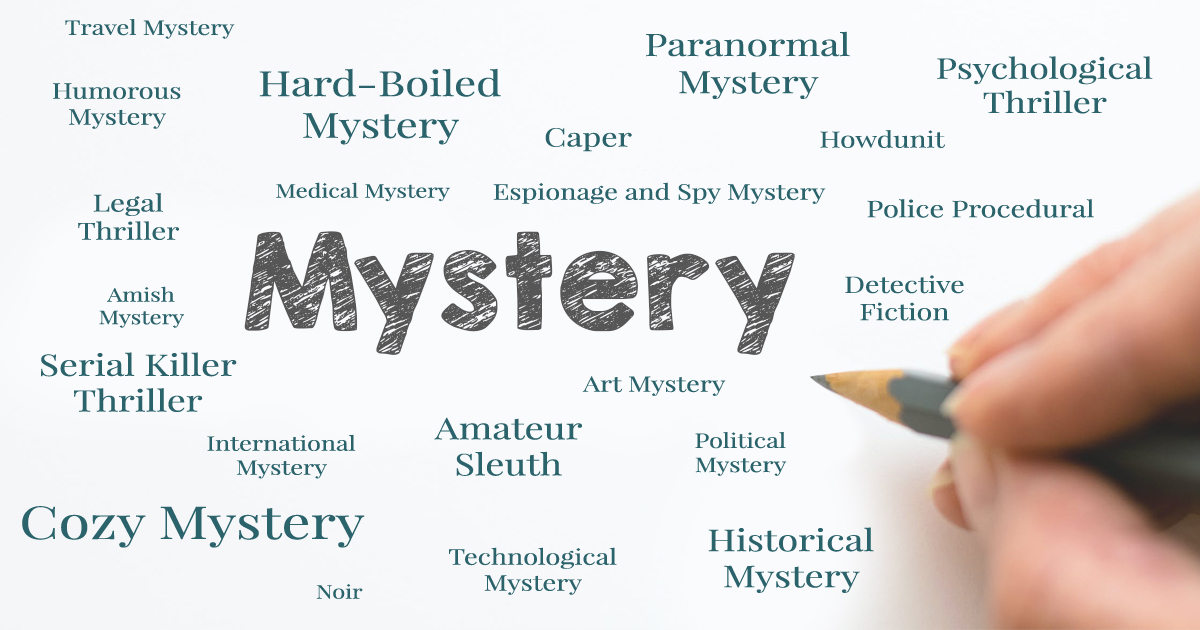
Mystery
The Mystery often has lots of suspense, intrigue, and the quest for answers. These stories often revolve around a perplexing puzzle, a crime to be solved, or a hidden truth waiting to be uncovered. At the heart of a mystery novel is the process of investigation, as detectives, amateur sleuths, or even ordinary individuals use their wits and deductive skills to unravel the enigma. Readers are drawn into a world of suspense, where secrets lurk behind every corner, and unexpected twists keep them guessing until the very end. Whether it's a classic "whodunit" or a psychological thriller, the Mystery genre offers an enticing journey into the depths of human curiosity and the thrill of solving the unknown.
Popular Mystery Subgenres
- Cozy Mystery: These mysteries often feature amateur sleuths in small, close-knit communities, and they typically have a lighthearted tone with minimal violence and gore.
- Police Procedural: Focused on the detailed, realistic procedures of law enforcement, these mysteries follow detectives as they investigate crimes, often highlighting the teamwork and forensic aspects of solving cases.
- Hard-Boiled Mystery: Characterized by tough, gritty protagonists, hard-boiled mysteries often involve complex, morally ambiguous cases and a dark, urban setting.
- Historical Mystery: Set in the past, these mysteries blend historical settings with crime-solving elements, offering readers a glimpse into bygone eras.
- Amateur Sleuth: These mysteries feature non-professional detectives, such as journalists, teachers, or librarians, who use their unique skills to solve crimes.
- Legal Thriller: Often revolving around legal proceedings, these mysteries involve lawyers, prosecutors, or defense attorneys who uncover dark secrets and navigate the justice system.
- Medical Mystery: These mysteries typically involve medical professionals, like doctors or forensic pathologists, solving intricate medical or scientific puzzles.
- Culinary Mystery: Combining mystery with the world of food and cooking, these stories often feature amateur chefs or bakers solving crimes while whipping up delicious dishes.
- Espionage and Spy Mystery: These mysteries delve into the world of espionage, featuring spies and secret agents navigating treacherous international landscapes.
- Psychological Thriller: Characterized by psychological tension and mind games, these mysteries often explore the complexities of the human mind and the blurred lines between reality and perception.
- Paranormal Mystery: Combining elements of the supernatural with crime-solving, these mysteries involve ghosts, psychics, or other paranormal elements.
- Locked-Room Mystery: These puzzles involve a seemingly impossible crime committed in a closed or confined space, challenging the detective to uncover the truth.
- Amish Mystery: Set in Amish communities, these mysteries combine the unique aspects of Amish culture with intriguing crimes to solve.
- Political Mystery: Centered on political intrigue, these mysteries often involve politicians, government conspiracies, and the power struggles within political arenas.
- Humorous Mystery: Infused with humor and wit, these mysteries offer a lighthearted take on crime-solving, often featuring quirky characters and comedic situations.
- International Mystery: These mysteries take readers on a globetrotting adventure, with investigations spanning multiple countries and cultures.
- Art Mystery: Often involving stolen art, forgeries, or mysteries within the art world, these stories combine intrigue with artistic pursuits.
- Travel Mystery: These mysteries follow characters on journeys or vacations, where they become embroiled in unexpected crime-solving adventures.
- Serial Killer Thriller: Focused on the pursuit of serial killers, these mysteries delve into the psychology of both the criminal and the investigator.
- Technological Mystery: These mysteries explore the world of technology, often involving hacking, cybercrime, or the dark side of the digital age.
- Caper: Caper mysteries typically involve heists, thefts, or elaborate schemes, with a focus on planning and executing a high-stakes crime.
- Howdunit: In these mysteries, the emphasis is on unraveling the method or mechanics behind a crime, challenging readers to solve the puzzle of "how it was done."
- Noir: Noir mysteries have a dark, gritty, and often morally ambiguous tone, with a focus on flawed protagonists navigating a world filled with crime, corruption, and moral decay.
- Detective Fiction: Characterized by the central role of a professional detective or investigator, these mysteries often focus on their deductive skills and methodical approach to solving crimes.
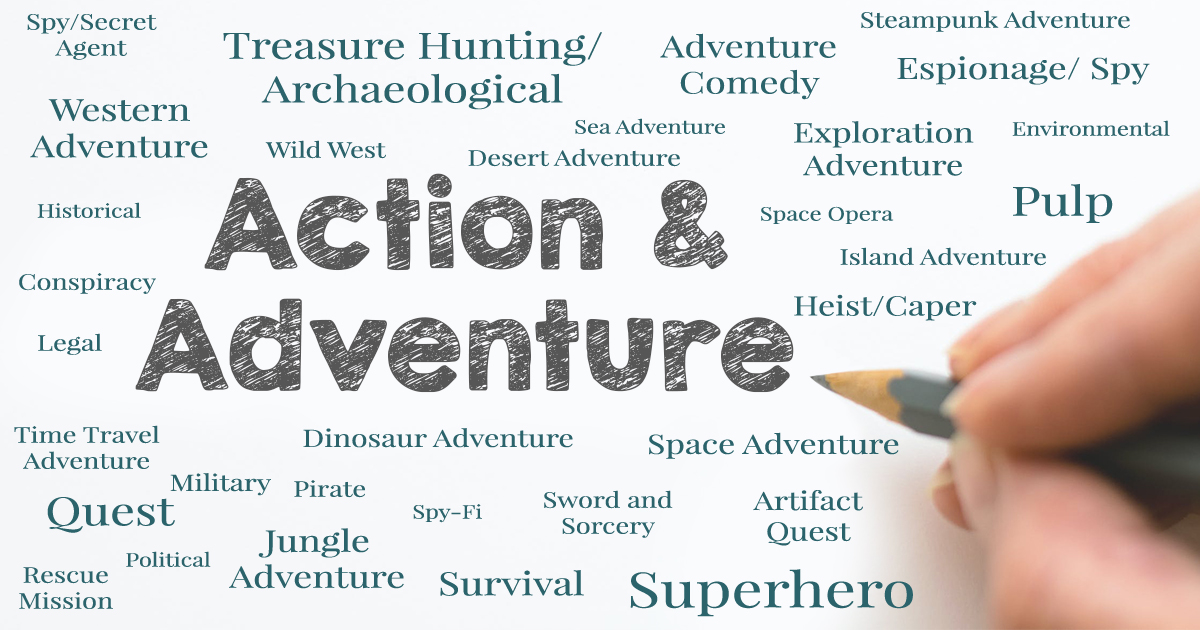
Action & Adventure
The Action and Adventure genre takes readers onto heart-pounding journeys filled with excitement, danger, and heroic quests. These stories often feature courageous protagonists who embark on epic adventures, facing formidable challenges, adversaries, and the unknown. Whether it's treasure hunters exploring remote jungles, spies navigating international conspiracies, or heroes battling mythical beasts, the genre's hallmark is its relentless pace, adrenaline-fueled sequences, and moments of high-stakes conflict. Action and Adventure novels transport readers to exotic locales, ancient ruins, and distant galaxies, offering an exhilarating escape into worlds of daring escapades and unforgettable quests.
Popular Subgenres of Action & Adventure
- Espionage/ Spy: Featuring spies and intelligence operatives in high-stakes missions.
- Military: Focused on military operations and combat situations.
- Survival: Centered on characters trying to survive in extreme conditions.
- Treasure Hunting/ Archaeological: Involving quests for hidden treasures and historical mysteries.
- Legal: Combining legal drama with action-packed elements.
- Techno: Incorporating advanced technology and scientific concepts.
- Historical: Set in specific historical periods with adventurous plots.
- Pirate: Set during the age of piracy, often featuring swashbuckling sailors.
- Spy-Fi: Blending espionage with futuristic technology.
- Political: Centered on political conspiracies, power struggles, and government intrigue.
- Heist/Caper: Involving meticulously planned thefts or criminal enterprises.
- Adventure Comedy: Combining action, adventure, and humor for a lighthearted reading experience.
- Superhero: Featuring characters with extraordinary abilities and heroic feats.
- Western Adventure: Transporting readers to the American Old West with cowboys and outlaws.
- Environmental: Addressing ecological and environmental issues.
- Pulp: Harkening back to the classic pulp fiction era with action-packed narratives.
- Quest: Involving characters on epic journeys or quests for a specific goal.
- Space Adventure: Set in outer space and often featuring space exploration or spacefaring characters.
- Dinosaur Adventure: Incorporating prehistoric creatures and adventurous situations.
- Sword and Sorcery: Combining action and adventure with elements of fantasy and magic.
- Exploration Adventure: Featuring characters embarking on journeys of discovery to uncharted lands or hidden realms.
- Sea Adventure: Set primarily on the high seas, often involving pirates, sailors, or maritime expeditions.
- Jungle Adventure: Taking place in dense, unexplored jungles with protagonists facing natural and supernatural challenges.
- Conspiracy: Involving intricate plots and conspiracies, often with characters uncovering dark secrets.
- Artifact Quest: Revolving around quests to find and protect powerful or mystical artifacts.
- Spy/Secret Agent: Focusing on the covert operations and espionage missions of secret agents.
- Rescue Mission: Centered on characters attempting daring rescues of hostages, prisoners, or captured allies.
- Wild West: Set in the American frontier during the 19th century, featuring cowboys, outlaws, and frontier justice.
- Desert Adventure: Taking place in arid desert landscapes, often with survival as a central theme.
- Underwater Adventure: Featuring underwater exploration, submarines, or adventures in the depths of the ocean.
- Island Adventure: Set on remote islands, often with characters facing isolation and danger.
- Historical Naval: Focusing on naval battles, exploration, and adventures during specific historical periods.
- Steampunk Adventure: Combining action and adventure with the aesthetics and technology of the steampunk genre.
- Biopunk Adventure: Exploring biological and genetic advancements in an action-packed context.
- Space Opera: Offering epic, sweeping space adventures with grand conflicts and cosmic settings.
- Time Travel Adventure: Involving time travel as a central plot element, with characters navigating different eras.
- Robot/Android Adventure: Featuring robotic or android characters in action-packed narratives.
- Post-Apocalyptic Adventure: Set in a world devastated by a catastrophic event, often with characters struggling to survive.
- Cyberpunk Adventure: Combining high-tech, futuristic settings with action and intrigue.
- Mythical Creature Adventure: Featuring mythical creatures like dragons, monsters, or legendary beasts.
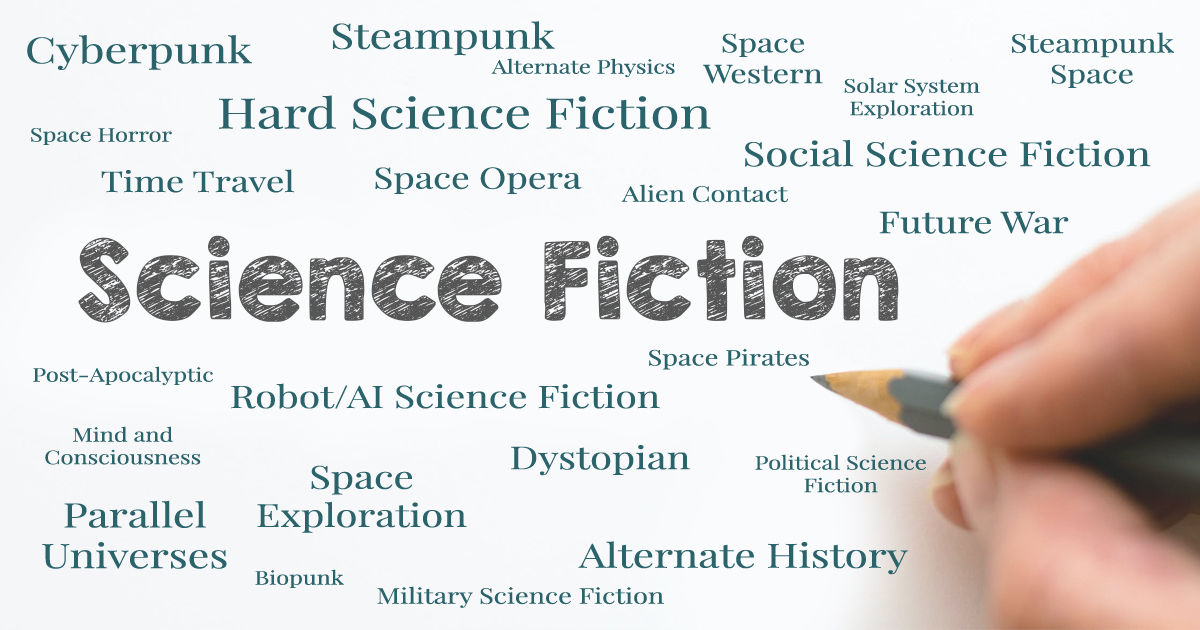
Science Fiction
The Science Fiction genre is a boundless realm of imagination that propels readers into the uncharted territories of the future, the cosmos, and the limitless possibilities of science and technology. These narratives explore speculative concepts, advanced civilizations, and futuristic landscapes, often delving into the profound impact of scientific advancements on society, morality, and human existence. From space exploration to time travel, artificial intelligence to extraterrestrial encounters, Science Fiction offers a captivating blend of scientific accuracy and creative vision. It challenges readers to contemplate the "what ifs" of the universe, serving as a lens through which we can reflect on the potential consequences, ethical dilemmas, and profound wonders of our ever-evolving world.
Popular Science Fiction Subgenres
- Space Opera: Epic tales set in the vastness of space, often featuring complex interstellar politics and grand adventures.
- Cyberpunk: Focusing on futuristic, high-tech, and dystopian settings, with an emphasis on computer technology and cybernetics.
- Hard Science Fiction: Grounded in real scientific principles and rigorous accuracy, exploring scientific concepts and possibilities.
- Dystopian: Set in bleak future societies characterized by oppressive governments, social decay, or environmental collapse.
- Post-Apocalyptic: Taking place after a catastrophic event, exploring the challenges of survival and rebuilding.
- Time Travel: Involving time travel as a central plot element, with characters navigating different time periods.
- Alternate History: Reimagining historical events with speculative changes, creating new worlds or timelines.
- Steampunk: Blending Victorian-era aesthetics with advanced steam-powered technology and alternate history.
- Biopunk: Exploring biological and genetic advancements in a futuristic context, often involving genetic engineering.
- Space Exploration: Focused on the exploration of outer space, new planets, and the challenges of deep space travel.
- Military Science Fiction: Centered on military operations in futuristic settings, often involving space warfare.
- Alien Contact: Exploring interactions with extraterrestrial life forms and the consequences of such encounters.
- Robot/AI Science Fiction: Featuring artificial intelligence, robots, and the ethical dilemmas surrounding advanced technology.
- Political Science Fiction: Dealing with political and social issues within futuristic or alternate societies.
- Social Science Fiction: Examining the impact of societal changes, often through speculative social experiments.
- Climate Fiction (Cli-Fi): Addressing the consequences of climate change and environmental issues in the future.
- Apocalyptic Science Fiction: Depicting the lead-up to an apocalyptic event or the immediate aftermath.
- Solarpunk: Offering an optimistic vision of the future with sustainable technology and ecological themes.
- Nanopunk: Exploring the implications of nanotechnology and microscopic machines in society.
- First Contact: Focused on initial encounters with alien civilizations and the challenges of communication.
- Space Western: Merging the elements of space travel with the frontier spirit of the Wild West.
- Steampunk Space: Combining the steampunk aesthetic with spacefaring adventures.
- Genetic Engineering: Exploring the ethical and scientific consequences of manipulating DNA.
- Nano-Tech Sci-Fi: Focusing on the world of nanotechnology and its impact on society.
- Mars Colonization: Centered on the colonization and terraforming of the planet Mars.
- Galactic Empire: Featuring vast empires spanning multiple star systems and the power struggles within.
- Parallel Universes: Involving the exploration of alternate realities and parallel dimensions.
- Space Pirates: Adventure tales of swashbuckling pirates in the depths of space.
- Solar System Exploration: Focused on the exploration of our own solar system, including distant planets and moons.
- Future War: Depicting large-scale conflicts in futuristic settings, often with advanced weaponry.
- Utopian Science Fiction: Offering a positive vision of the future with advanced technology and societal harmony.
- Mind and Consciousness: Exploring the nature of consciousness, mind uploading, and digital existence.
- Cybernetic Enhancements: Delving into the integration of technology with the human body and its implications.
- Nuclear Apocalypse: Centered on the aftermath of nuclear war and its effects on society.
- Climate Fiction (Cli-Fi): Addressing ecological and climate-related challenges in a speculative future.
- Space Horror: Combining elements of science fiction with horror themes and extraterrestrial threats.
- Solar Punk: Focusing on environmentally conscious, sustainable futures with green technology.
- Transhumanism: Exploring the evolution of humanity through advanced technology and modification.
- Colonization and Terraforming: Depicting the challenges of settling and transforming alien worlds.
- Alternate Physics: Speculating on alternative laws of physics or dimensions that affect the story's reality.
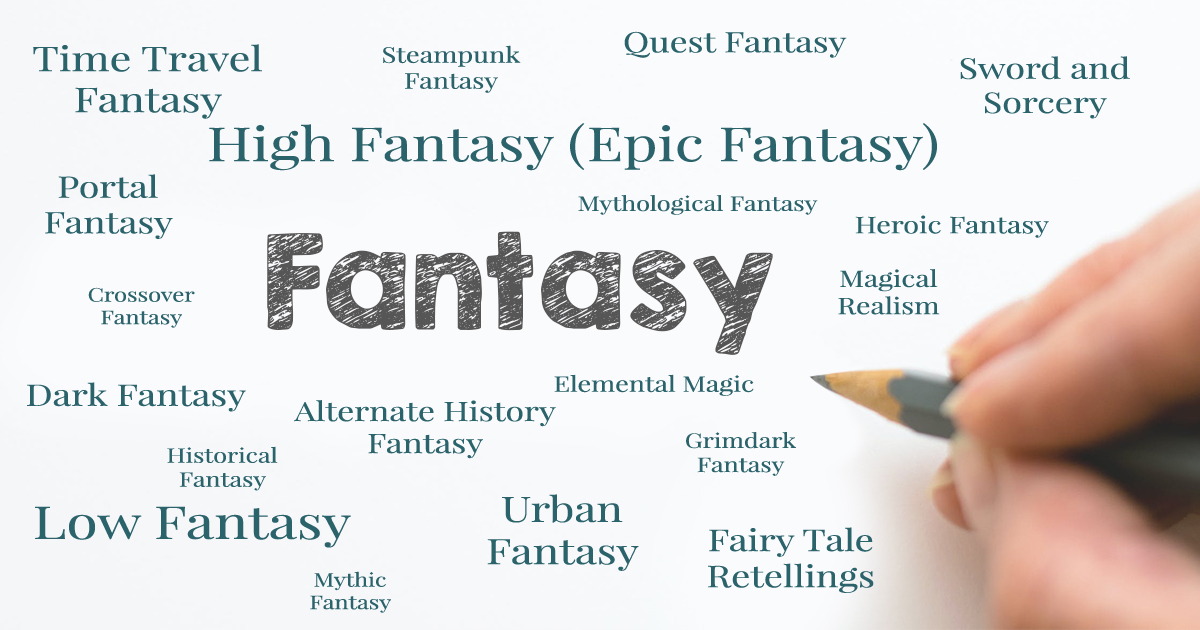
Fantasy
The Fantasy genre is a mesmerizing realm of storytelling that transports readers to enchanting worlds filled with magic, mythical creatures, and epic quests. These narratives transcend the boundaries of reality, inviting readers to journey through realms where the laws of nature are replaced by the extraordinary. From sword-wielding heroes battling ancient evils to young wizards discovering their hidden powers, Fantasy weaves tales of wonder and adventure where imagination knows no bounds. At its heart, this genre sparks the imagination, inviting readers to believe in the extraordinary and explore the realms of the impossible, making it a timeless and enchanting genre beloved by readers of all ages.
Popular Subgenres of Fantasy
- High Fantasy (Epic Fantasy): Set in entirely fictional worlds with complex mythologies, multiple races, and grand adventures.
- Low Fantasy: Integrates fantastical elements into our own world, often with hidden magical societies or beings.
- Urban Fantasy: Combines fantasy elements with an urban, contemporary setting, often involving supernatural detective or urban wizard themes.
- Sword and Sorcery: Focuses on action-packed adventures with warrior protagonists, often in gritty and dangerous settings.
- Steampunk Fantasy: Blends fantasy with 19th-century steam-powered technology, often set in alternative historical periods.
- Portal Fantasy: Involves characters traveling to fantastical realms through portals or gateways.
- Magical Realism: Incorporates magical or fantastical elements into a realistic, everyday world, blurring the line between reality and fantasy.
- Fairy Tale Retellings: Reimagines classic fairy tales with new twists, perspectives, or modern sensibilities.
- Historical Fantasy: Combines historical settings or periods with magical elements, offering an alternative view of history.
- Dark Fantasy: Features darker, more sinister themes, often involving morally ambiguous characters or grim worlds.
- Heroic Fantasy: Centers around heroic quests, typically with a chosen one or hero's journey narrative.
- Mythological Fantasy: Draws inspiration from world mythology, featuring gods, legends, and mythical creatures.
- Grimdark Fantasy: Emphasizes realism, morally complex characters, and a bleak or gritty tone.
- Comedic Fantasy: Infuses humor and satire into fantastical adventures and magical worlds.
- Dragon Fantasy: Highlights dragons as central elements, often exploring their roles in the world.
- Military Fantasy: Involves warfare and battles in fantastical settings, with a focus on military strategy.
- Fairytale Fantasy: Adapts fairy tales into longer, more complex narratives, exploring their worlds and characters.
- Arthurian Fantasy: Revolves around the legends of King Arthur, the Knights of the Round Table, and the Arthurian mythos.
- Elemental Magic: Focuses on magic tied to the elements (earth, air, fire, water), with characters harnessing elemental powers.
- Wuxia Fantasy: Influenced by Chinese martial arts literature, featuring martial artists with supernatural abilities.
- Alien Fantasy: Features otherworldly creatures and beings, often involving interstellar adventures and unique extraterrestrial worlds.
- Time Travel Fantasy: Incorporates time travel as a central theme, allowing characters to explore different eras or timelines.
- Mythic Fantasy: Draws inspiration from ancient myths and legends, reimagining them with fresh perspectives.
- Quest Fantasy: Focuses on epic quests, journeys, or adventures undertaken by characters to achieve a significant goal.
- Folklore Fantasy: Weaves elements from regional folklore and legends into the story, reflecting cultural traditions.
- Alternate History Fantasy: Explores alternative historical events and outcomes influenced by magical or fantastical elements.
- Cultural Fantasy: Emphasizes the richness of various cultures and their mythologies, often featuring diverse characters and settings.
- Animal Fantasy: Features anthropomorphic animals as main characters in fantastical adventures.
- Stealth Fantasy: Blends elements of espionage, spies, or covert operations with fantasy settings and magic.
- Crossover Fantasy: Merges elements from multiple subgenres, creating unique and unexpected combinations.
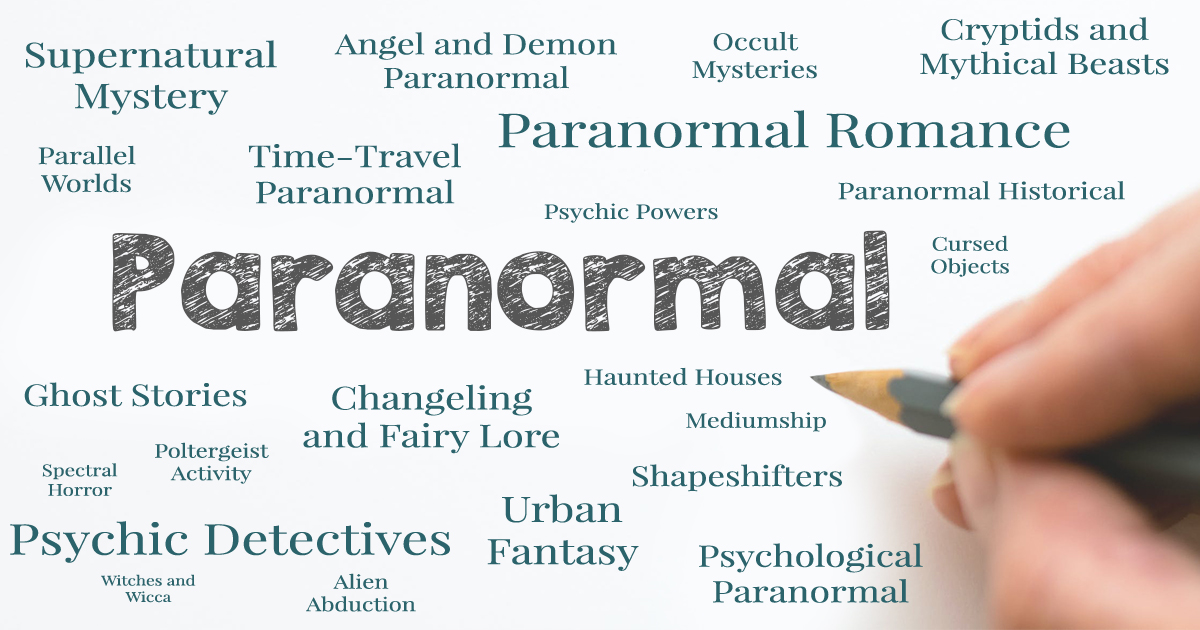
Paranormal
The Paranormal genre ventures into the mysterious and the unexplained, where the supernatural takes center stage in stories that challenge our perception of reality. These narratives delve into the world of ghosts, spirits, vampires, werewolves, psychics, and otherworldly phenomena, blurring the lines between the natural and the supernatural. Paranormal fiction taps into our fascination with the unknown and our desire to explore the hidden dimensions of existence, often weaving tales of suspense, romance, and intrigue that unfold against a backdrop of eerie and enigmatic forces. Whether it's a haunted house, a cursed artifact, or individuals with extraordinary abilities, this genre invites readers to embrace the eerie and the extraordinary, embarking on journeys into the realms of the unexplained.
Popular Subgenres of the Paranormal Genre
- Urban Fantasy: Set in contemporary, often urban settings, where paranormal elements like magic and supernatural creatures coexist with the modern world.
- Paranormal Romance: Combines paranormal elements with romantic storylines, often featuring relationships between humans and supernatural beings like vampires, werewolves, or witches.
- Supernatural Mystery: Blends elements of mystery and paranormal, with characters solving supernatural or paranormal cases, often involving ghosts, spirits, or otherworldly phenomena.
- Ghost Stories: Focuses on encounters with ghosts and spirits, exploring themes of hauntings, possessions, and the afterlife.
- Psychic Detectives: Features protagonists with psychic abilities, such as clairvoyance or telepathy, who use their powers to solve crimes or mysteries.
- Time-Travel Paranormal: Involves time-traveling characters who navigate the past, present, or future while encountering paranormal elements.
- Witches and Wicca: Revolves around witches, wizards, or practitioners of Wicca, often delving into magical rituals, spells, and witchcraft.
- Mediumship: Focuses on characters with the ability to communicate with the dead, often helping spirits resolve unfinished business.
- Angel and Demon Paranormal: Explores the realms of angels and demons, their interactions with humans, and the eternal battle between good and evil.
- Haunted Houses: Centers around haunted or cursed locations, with characters uncovering the dark history and supernatural occurrences within them.
- Psychic Powers: Features characters with various psychic abilities, such as telekinesis, precognition, or mind-reading, and how these powers affect their lives.
- Paranormal Historical: Sets paranormal events or creatures within historical time periods, blending history with the supernatural.
- Changeling and Fairy Lore: Draws inspiration from folklore and mythology, often involving changelings, fairies, and other mythical creatures.
- Alien Abduction: Explores the theme of extraterrestrial encounters, UFOs, and alien abductions.
- Poltergeist Activity: Focuses on violent and mischievous supernatural entities that create chaos and havoc in the lives of characters.
- Cursed Objects: Involves cursed or haunted objects that bring misfortune to those who possess them.
- Cryptids and Mythical Beasts: Features encounters with mysterious creatures like Bigfoot, the Loch Ness Monster, or mythical beasts from various cultures.
- Spectral Horror: Emphasizes the terrifying and horrifying aspects of encounters with spirits and other spectral entities.
- Occult Mysteries: Involves characters delving into the world of occultism, magic, and hidden knowledge, often uncovering ancient and forbidden secrets.
- Psychological Paranormal: Focuses on the psychological effects of paranormal experiences, blurring the line between reality and the supernatural.
- Cursed Bloodlines: Explores the idea of generational curses or families with supernatural abilities or afflictions passed down through bloodlines.
- Zombie Apocalypse: Centers on zombie outbreaks and the struggle for survival in a world overrun by the undead.
- Shapeshifters: Features characters who can transform into animals or other forms, often exploring themes of identity and duality.
- Alien Invasions: Explores the concept of Earth being invaded or visited by extraterrestrial civilizations with varying intentions.
- Lovecraftian Horror: Draws inspiration from H.P. Lovecraft's cosmic horror, focusing on the insignificance of humanity in the face of ancient and incomprehensible cosmic entities.
- Wraiths and Revenants: Involves vengeful spirits or the return of the dead seeking retribution or unfinished business.
- Parallel Worlds: Characters navigate parallel dimensions or alternate realities with different rules and supernatural phenomena.
- Elemental Magic: Features characters with control over the elements, such as fire, water, earth, or air, often tied to a larger magical system.
- Sorcery and Dark Arts: Explores characters practicing dark magic, forbidden rituals, and the consequences of delving into the occult.
- Exorcism and Possession: Centers on the battle against demonic possession and the efforts to exorcise malevolent spirits.
Western
The Western genre is an evocative and rugged landscape of storytelling that conjures images of vast open plains, dusty trails, and the frontier spirit of the American West. These narratives transport readers to a bygone era when the untamed wilderness was the backdrop for the adventures of cowboys, outlaws, and pioneers. The Western genre embodies themes of courage, justice, and the pursuit of a better life, often pitting characters against the harsh forces of nature and the moral complexities of a lawless frontier. With iconic shootouts, sprawling landscapes, and characters defined by their grit and determination, Westerns capture the essence of a pivotal period in history, showcasing the enduring allure of the Wild West's untamed spirit.
Average Word Count for Western: 70,000 to 100,000 words
Dystopian Fiction
The Dystopian genre is a thought-provoking and often chilling exploration of bleak, future worlds where societal structures have crumbled, and humanity faces the consequences of its actions. These narratives present readers with harrowing visions of oppressive governments, environmental catastrophes, and the dire consequences of unchecked technological advancements. Dystopian fiction serves as a cautionary mirror to our own world, challenging us to contemplate the potential consequences of our choices and the fragility of the systems that govern society.
Utopian Fiction
The Utopian Fiction genre offers readers a glimpse into idealized worlds where human society has achieved perfection, harmony, and an idyllic existence. These narratives present utopian visions where problems such as inequality, scarcity, and conflict have been resolved through innovation, social order, or advanced technology. Utopian fiction challenges us to envision a society where humanity's potential for good is realized, emphasizing values like peace, equality, and justice. While these utopian worlds may seem like paradises, they often hold hidden complexities and philosophical questions about the price of perfection and the challenges of maintaining utopian ideals. In a world often marked by imperfections and challenges, Utopian Fiction offers a compelling exploration of the possibilities for a better, more harmonious future.
Chick Lit
The Chick Lit genre is a vibrant and relatable realm of literature that predominantly centers on the lives, experiences, and journeys of contemporary women. These novels often delve into the complexities of modern relationships, career aspirations, and the pursuit of personal fulfillment, all infused with wit, humor, and a touch of romance. Chick Lit provides a platform for readers to connect with multifaceted female protagonists who face relatable challenges, from navigating the highs and lows of love to the trials and tribulations of the workplace.
Christian
Christian fiction encompasses a diverse collection of literature that explores faith, spirituality, and Christian principles at its core. These novels often feature characters who grapple with questions of belief, morality, and personal redemption, and they are set within a framework of Christian values and themes. While some Christian fiction is overtly religious, delving into biblical narratives and theological discussions, others take a more subtle approach, weaving Christian principles into compelling stories that can resonate with readers of various faith backgrounds. These novels offer a unique opportunity for readers to explore complex human experiences through the lens of faith, making the Christian genre a source of inspiration, comfort, and reflection for many.
- Inspirational Fiction: These novels often focus on characters facing challenges and finding strength and hope through their faith.
- Amish Fiction: Set in Amish communities, these stories explore the traditions, values, and struggles of Amish life.
- Biblical Fiction: These novels bring to life stories and characters from the Bible, offering imaginative retellings and interpretations.
- Christian Romance: Combining Christian themes with romance, these books emphasize the importance of faith in relationships.
- Christian Suspense: These books incorporate elements of mystery and suspense, often featuring protagonists who must rely on their faith to solve mysteries or face danger.
- Christian Historical Fiction: Set in various historical periods, these novels explore how faith played a role in the lives of people in the past.
- Christian Science Fiction and Fantasy: These genres blend Christian themes with speculative elements, exploring faith in otherworldly settings.
- Christian Women's Fiction: These novels often center around the lives of women who navigate challenges, relationships, and personal growth while relying on their Christian faith.
- Christian Mystery: Combining elements of mystery and suspense with Christian themes, these books feature detectives or amateur sleuths who solve mysteries with faith-based insights.
- Christian Fantasy Adventure: These books blend Christian principles with fantastical adventures, featuring characters who embark on epic quests in imaginative worlds while grappling with questions of faith and morality.
- Christian Western: Set in the American Old West, these stories explore the challenges and adventures of pioneers and settlers who uphold Christian values in a rugged frontier.
- Christian Historical Romance: Combining historical settings with romance, these novels focus on the love stories of characters who draw strength from their Christian faith.
- Christian Contemporary Fiction: These stories are set in the present day and address modern issues and challenges while incorporating Christian themes and values.
- Christian Inspirational Romance: These books emphasize romantic relationships while also delivering inspirational messages about faith, hope, and love.
- Christian Cozy Mystery: These cozy mysteries feature amateur sleuths in small communities who use their faith and moral compass to solve crimes in a gentle and comforting manner.
Speculative Fiction
Speculative fiction is a genre that delves into imaginative storytelling, often in alternate or futuristic settings, where authors explore innovative concepts, technologies, or fantastical elements beyond our known reality. This genre encourages creative "what if" scenarios, inviting readers to ponder their impact on society and the human condition, blurring the lines between the possible and impossible. Its roots trace back to ancient Greece when playwrights like Euripides explored alternate truths. In essence, speculative fiction encompasses fantasy, sci-fi, horror, and superhero narratives, diverging from "realistic fiction" through elements that defy our reality. It's a genre of boundless possibilities and alternative versions of the world.
Magic Realism
The Magic Realism genre is a captivating fusion of the every day and the extraordinary, where the fantastical seamlessly melds with the mundane. In these narratives, authors weave enchanting tales set in the real world but infused with subtle or surreal elements of magic, mysticism, or the supernatural. Magic Realism invites readers to explore the ordinary lives of its characters while navigating the enigmatic and the unexplainable. This genre blurs the boundaries between reality and fantasy, offering a lens through which to view the world in a fresh, mystical light. Rooted in cultural traditions and folklore, Magic Realism serves as a rich tapestry where the mystical and the ordinary coexist, often leading to profound insights into the human condition and the mysteries of existence.
LGBTQ+
LGBTQ+ Fiction is a diverse and inclusive genre that gives voice to the experiences, identities, and stories of the LGBTQ+ community. These narratives explore the complexities of love, identity, and acceptance, shedding light on the struggles, triumphs, and diverse lives of LGBTQ+ individuals. Any book featuring a protagonist who is part of the LGBTQ+ community falls into this genre.
Satire Fiction
Satire Fiction is a sharp and often humorous genre that employs wit, irony, and sarcasm to critique and lampoon various aspects of society, politics, or human behavior. These narratives use clever wordplay and exaggerated characters to expose the flaws and absurdities of the world in which we live. Satire serves as a powerful tool for social commentary, challenging norms, hypocrisy, and injustice through its biting humor and clever insights. Whether it's a scathing takedown of political institutions, a witty examination of societal conventions, or a playful jab at human foibles, Satire Fiction invites readers to laugh, reflect, and question the status quo, making it a genre that wields humor as a potent instrument of change and enlightenment.
Holiday Fiction
Holiday Fiction is a heartwarming and festive genre that captures the spirit of various celebrations and special occasions throughout the year. These stories revolve around themes of love, family, friendship, and the magic of holidays, offering readers a cozy escape into the enchanting world of seasonal festivities. Whether it's Christmas, Thanksgiving, Halloween, or any other cherished holiday, this genre invites readers to immerse themselves in the traditions, rituals, and joyous moments that define these special times. Holiday Fiction often evokes feelings of nostalgia and warmth, making it a beloved genre that allows readers to relive the magic of their favorite holidays year-round and experience the enchantment of new celebrations through the eyes of relatable characters.
Popular Holiday Fiction Subgenres
- Christmas Fiction: Stories set during the Christmas season, often focusing on themes of love, family, and the spirit of giving.
- Thanksgiving Fiction: Narratives centered around Thanksgiving celebrations, emphasizing gratitude, togetherness, and the joys of sharing a meal.
- Halloween Fiction: Spooky and supernatural tales set during the Halloween season, featuring witches, ghosts, and eerie occurrences.
- Valentine's Day Fiction: Romantic stories set on Valentine's Day, exploring themes of love, romance, and relationships.
- Easter Fiction: Narratives that capture the spirit of Easter, often featuring themes of rebirth, faith, and hope.
- New Year's Fiction: Stories set on New Year's Eve or New Year's Day, focusing on fresh starts, resolutions, and new beginnings.
- Hanukkah Fiction: Stories centered around the Jewish holiday of Hanukkah, highlighting traditions, family, and the miracle of the menorah.
- Diwali Fiction: Narratives set during the Hindu festival of Diwali, celebrating light, triumph over darkness, and cultural traditions.
- Kwanzaa Fiction: Stories that explore the principles and celebrations of the African-American holiday of Kwanzaa.
- Fourth of July Fiction: Tales set on Independence Day, often featuring patriotic themes, fireworks, and celebrations of freedom.
- St. Patrick's Day Fiction: Stories set during St. Patrick's Day, often featuring Irish culture, folklore, and celebrations.
- Labor Day Fiction: Narratives set on Labor Day, exploring themes of work, labor movements, and the end of summer.
- Columbus Day Fiction: Stories centered around Columbus Day, often delving into historical events, exploration, and discovery.
- Mardi Gras Fiction: Tales set during the lively festivities of Mardi Gras, featuring parades, masks, and revelry.
- Back to School Fiction: Stories that revolve around the back-to-school season, capturing the excitement and challenges of a new academic year.
- Arbor Day Fiction: Narratives that celebrate Arbor Day, highlighting environmental conservation and the importance of trees.
- Earth Day Fiction: Stories set on Earth Day, often focusing on environmental awareness, conservation efforts, and sustainable living.
- National Day Fiction: Narratives set on various national holidays around the world, exploring cultural traditions and heritage.
- Harvest Festival Fiction: Tales centered around harvest festivals, showcasing agricultural abundance and community celebrations.
- Veterans Day Fiction: Stories that honor and commemorate Veterans Day, often focusing on themes of service, sacrifice, and gratitude.
Graphic Novel
The Graphic Novel genre is a dynamic and visually captivating form of storytelling that blends the narrative power of literature with the artistic prowess of illustration. These narratives unfold through a combination of vivid artwork and compelling text, offering readers a unique and immersive reading experience. Graphic novels cover a diverse range of themes and genres, from superheroes and fantasy epics to autobiographical reflections and historical dramas. They provide a platform for both established and emerging artists and writers to push the boundaries of storytelling, utilizing the synergy of visual and textual elements to convey intricate plots, rich character development, and thought-provoking themes. Graphic novels have gained widespread recognition and respect in the literary world, appealing to readers of all ages and backgrounds while contributing to the evolution of storytelling as a whole.
Short Story
Short Stories are concise and impactful narratives that offer a complete and compelling tale within a limited word count. This genre excels in brevity, capturing readers' attention and emotions in a brief but powerful narrative arc. Short stories come in various forms, from literary fiction that delves into profound human experiences to genre-specific tales like mysteries, science fiction, or horror. They require skillful storytelling to develop characters, themes, and plotlines swiftly, often leaving readers with thought-provoking conclusions or open-ended possibilities. This genre allows writers to experiment with diverse styles and themes while offering readers a quick yet memorable journey into the world of storytelling.
Novellas
Novellas occupy a unique space in the realm of storytelling, offering a captivating narrative that is longer and more intricate than a short story but more concise than a full-length novel. These works balance the art of brevity with the depth of character development and plot complexity. Novellas often explore themes, relationships, and journeys with a level of intimacy that allows readers to engage deeply with the story in a single sitting. This genre has the versatility to span various themes and genres, from literary fiction to romance, science fiction, and beyond. Novellas are celebrated for their ability to deliver a rich and impactful narrative experience in a compact form, making them a favored choice for both authors seeking to convey a story concisely and readers looking for a fulfilling but shorter literary adventure.
Young Adult
The Young Adult (YA) genre is a dynamic and diverse literary landscape dedicated to the experiences and challenges of adolescent readers. These novels delve into the emotional and transformative journey of teenagers as they navigate the complexities of identity, relationships, and self-discovery. YA books encompass a wide range of genres, from contemporary realism addressing real-world issues to fantasy and science fiction, offering imaginative adventures. What sets YA apart is its ability to authentically capture the voices, concerns, and aspirations of its young protagonists, resonating with readers facing similar life transitions. This genre has proven its enduring appeal, attracting readers of all ages who appreciate its relatable characters, relatable themes, and its capacity to inspire empathy and understanding among diverse audiences.
New Adult
New Adult (NA) is a genre that bridges the transition between Young Adult and Adult fiction, focusing on the unique challenges and experiences of individuals in their late teens to early twenties. These narratives explore the complexities of emerging adulthood, from navigating higher education, career choices, and personal growth to forging relationships and gaining independence. NA novels often feature protagonists facing more mature themes, including romance, identity, and self-discovery, while addressing the evolving dynamics of friendships and family relationships. This genre resonates with readers who appreciate stories that capture the transformative journey from adolescence to adulthood, offering a relatable lens through which to examine the trials and triumphs of this pivotal life stage.
Middle Grade
Middle Grade fiction, often abbreviated as MG, is a captivating genre tailored to the interests and developmental stages of readers aged approximately 8 to 12. These books offer engaging and age-appropriate narratives that cater to the evolving sensibilities of young readers while introducing them to a variety of themes, adventures, and relatable characters. MG fiction spans a wide range of genres, from contemporary and historical tales to fantasy, mystery, and more. What sets MG apart is its emphasis on the coming-of-age experiences, friendships, and the exploration of morality and values as young readers begin to form their own worldviews. This genre serves as a crucial stepping stone in a reader's literary journey, fostering a lifelong love of reading and an appreciation for storytelling.
Children’s
Children's Books encompass a delightful and diverse genre that caters to the youngest of readers, from infants to early teens. These books are thoughtfully crafted to engage, entertain, and educate young minds, fostering a lifelong love of reading. Children's literature spans a wide spectrum, from board books designed for the very young, featuring colorful illustrations and simple stories, to chapter books and middle-grade novels that introduce readers to more complex narratives and characters. The genre embraces imaginative tales, moral lessons, and diverse cultural perspectives, offering young readers a window into different worlds and experiences. With their enchanting illustrations and captivating narratives, children's books play an essential role in shaping creativity, empathy, and a deep appreciation for the magic of storytelling in the hearts of our youngest readers.
Women’s Fiction
Women's Fiction is a compelling genre that delves into the multifaceted lives, experiences, and relationships of women. These narratives often explore themes of personal growth, self-discovery, and the complexities of human connections. While not limited to female readers, Women's Fiction tends to focus on the emotional and psychological journeys of its female protagonists, offering a lens through which readers can relate to and empathize with the characters' challenges, triumphs, and aspirations. This genre spans a broad spectrum of themes, from family and friendships to love and career, providing a rich tapestry of stories that celebrate the resilience and strength of women in all their diverse roles and identities.
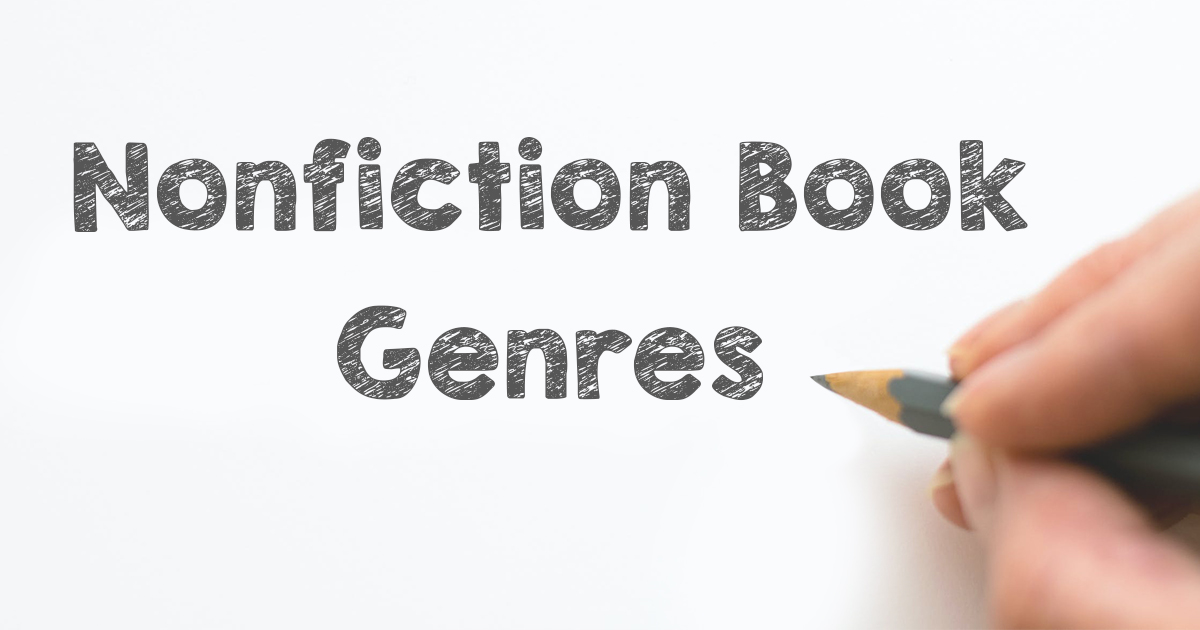
Nonfiction Book Genres
Biography
The Biography genre is a literary treasure trove that brings real-life stories to the forefront, offering readers an intimate glimpse into the lives, achievements, and trials of notable individuals. These narratives span a vast spectrum of subjects, from historical figures and political leaders to artists, scientists, athletes, and everyday people with extraordinary tales to tell. What sets biography apart is its commitment to meticulous research, ensuring accuracy and authenticity while weaving compelling narratives that capture the essence of its subjects. Biography books not only provide insight into the personal and professional journeys of their subjects but also shed light on the broader historical, cultural, and societal contexts that shaped their lives.
Historical Nonfiction
Historical Nonfiction is a captivating genre that serves as a window into the past, offering readers a meticulously researched and fact-based account of historical events, figures, and periods. These narratives are crafted with a commitment to accuracy and a dedication to unearthing the truths of history. Historical nonfiction spans a diverse range of topics, from biographies of influential figures to in-depth explorations of pivotal moments in time. Through the skillful weaving of archival records, eyewitness accounts, and thorough research, this genre breathes life into the past, allowing readers to witness the triumphs, struggles, and complexities of history in vivid detail. Historical nonfiction plays a pivotal role in preserving and sharing the rich tapestry of human experiences, offering an invaluable resource for both scholars and enthusiasts eager to uncover the secrets and lessons of bygone eras.
Self-Help
The Self-help Genre is a powerful literary category devoted to personal growth, empowerment, and positive transformation. These books serve as guides, mentors, and sources of inspiration, offering practical advice, strategies, and wisdom to help individuals enhance their lives and achieve their goals. Self-help books encompass a wide spectrum of topics, from mental health and wellness to productivity, relationships, and spirituality. What distinguishes this genre is its commitment to fostering self-awareness and providing actionable steps for self-improvement. Authors draw upon their expertise, research, and often personal experiences to offer readers tools for overcoming obstacles, nurturing resilience, and embracing their fullest potential. Self-help literature serves as a beacon of hope, reminding us that change is possible, and that each of us has the power to shape our destinies.
Most Popular Self-Help Subgenres
- Personal Development: Books that focus on individual growth, self-awareness, and self-improvement.
- Motivation and Inspiration: Titles designed to inspire and motivate readers to achieve their goals and aspirations.
- Mental Health and Well-being: Books that address mental health challenges, offer coping strategies, and promote emotional well-being.
- Relationships and Communication: Self-help books that explore topics like effective communication, building healthy relationships, and resolving conflicts.
- Productivity and Time Management: Guides to enhance organizational skills, boost productivity, and manage time efficiently.
- Spirituality and Mindfulness: Books that delve into spiritual practices, mindfulness, and finding inner peace.
- Financial Success: Self-help literature on financial planning, wealth-building, and achieving financial freedom.
- Health and Wellness: Titles that cover topics like fitness, nutrition, and holistic well-being.
- Happiness and Positivity: Books that offer strategies for cultivating happiness, gratitude, and a positive mindset.
- Creativity and Personal Fulfillment: Guides to unleash creativity, find purpose, and live a fulfilling life.
- Stress Management: Books that provide techniques and strategies for managing stress and anxiety.
- Motivational Memoirs: Memoirs of individuals who have overcome significant challenges and share their journey to inspire others.
- Parenting and Family: Self-help books that offer advice and insights into effective parenting and family dynamics.
- Career and Success: Guides to career advancement, professional development, and achieving success in the workplace.
- Self-Compassion and Self-Love: Books that focus on building self-esteem, self-compassion, and fostering self-love.
- Addiction and Recovery: Self-help literature for individuals dealing with addiction issues and seeking recovery.
- Personal Finance and Debt Management: Guides on managing finances, reducing debt, and achieving financial stability.
- Creativity and Innovation: Books that encourage creative thinking, innovation, and problem-solving.
- Goal Setting and Achievement: Resources for setting and achieving personal and professional goals.
- Emotional Intelligence: Books that explore emotional intelligence, empathy, and interpersonal skills.
Travel
The Travel Genre is a literary passport to the world's wonders, cultures, and landscapes. These books transport readers to far-flung destinations, inviting them to embark on captivating journeys, whether real or imagined. Travel literature is a rich tapestry that encompasses a diverse range of works, from travelogues and memoirs detailing the author's adventures to guidebooks offering practical advice for travelers. At its heart, this genre serves as a bridge between cultures, fostering curiosity, understanding, and a profound sense of wanderlust. Travel books not only provide vivid descriptions of places but also explore the transformative power of exploration, reminding us of the vast and awe-inspiring beauty of our planet and the diverse people who call it home.
True Crime
The True Crime Genre delves into the chilling and enigmatic world of real-life mysteries, investigations, and criminal acts. These books are a gripping exploration of actual crimes, criminals, and the relentless pursuit of justice. True crime narratives cover a wide spectrum of cases, from notorious historical crimes to contemporary mysteries, and they provide readers with an unfiltered look into the minds of both criminals and law enforcement. Whether recounting cold cases, unsolved mysteries, or the pursuit of justice, this genre offers a riveting glimpse into the darker aspects of human behavior and the tireless efforts to solve and understand these perplexing criminal puzzles.
Parenting
The Parenting Book Genre within nonfiction is a valuable resource for individuals navigating the rewarding yet challenging journey of parenthood. These books offer guidance, insights, and expert advice on raising children, addressing the myriad of challenges parents may encounter. From newborn care to adolescent development, parenting books cover a broad spectrum of topics, providing practical strategies and emotional support for nurturing healthy, happy families. With a focus on evidence-based research, personal anecdotes, and diverse perspectives, parenting books empower caregivers with the knowledge and tools needed to navigate the complexities of child-rearing, fostering strong bonds and positive outcomes for both parents and children.
Memoir and Autobiography
The Memoir and Autobiography Genre is a captivating literary realm where individuals share the intimate tapestries of their lives. These books offer deeply personal accounts, memories, and reflections, allowing authors to invite readers into their world. Memoirs provide windows into the human experience, from moments of triumph and resilience to vulnerability and growth. Autobiographies span the breadth of a person's life journey, chronicling their evolution, achievements, and challenges. Whether recounting tales of remarkable achievements, extraordinary adventures, or the everyday struggles and triumphs, this genre allows readers to connect with the shared threads of humanity that bind us all, and it often serves as a source of inspiration and insight into the lives of others.
Narrative Nonfiction
Narrative Nonfiction is a dynamic and compelling genre that weaves factual information into a riveting storytelling format. These books transform real-life events, people, and experiences into gripping narratives that captivate readers' imaginations while educating and enlightening. Narrative nonfiction transcends traditional dry reporting, employing literary techniques such as vivid descriptions, character development, and immersive storytelling to bring historical events, scientific discoveries, biographical accounts, and cultural phenomena to life. Whether illuminating untold stories from the past, demystifying complex subjects, or shedding light on contemporary issues, this genre offers a powerful fusion of storytelling and truth, proving that real-life narratives can be as enthralling as fiction.
Cookbooks
The Cookbook Genre is a delectable fusion of culinary artistry and literary craftsmanship, offering readers a feast for the senses and the palate. These books are a treasure trove of recipes, culinary techniques, and inspiration, carefully curated by chefs, food enthusiasts, and culinary experts. Cookbooks are as diverse as the world's cuisines, ranging from classic family recipes and regional specialties to gourmet creations and dietary-focused offerings. With tantalizing photography and step-by-step instructions, they invite home cooks to embark on culinary adventures, explore new flavors, and savor the joys of preparing and sharing delicious meals. More than just instructional guides, cookbooks are culinary narratives, celebrating the cultural, historical, and personal stories behind each dish, making them a delightful genre that nourishes both body and soul.
Religion and Spirituality
The Religion and Spirituality Genre is a profound exploration of humanity's enduring quest for meaning, faith, and transcendence. Within this genre, readers encounter a rich tapestry of beliefs, rituals, and sacred texts from diverse religious traditions and spiritual philosophies. These books serve as guides to the inner landscapes of the soul, offering wisdom, solace, and guidance for those seeking spiritual enlightenment and a deeper connection to the divine. Whether delving into the teachings of established religions, exploring the mysticism of ancient traditions, or embarking on a personal spiritual journey, this genre is a sanctuary for introspection, moral contemplation, and the exploration of the profound questions that have shaped human existence throughout history.
Philosophy
The Philosophy Book Genre is a realm of profound contemplation and intellectual exploration, where ideas become the canvas upon which the mysteries of existence are painted. These books offer readers a portal into the timeless questions that have shaped human thought for centuries. They delve into the nature of reality, ethics, knowledge, and the very essence of human existence. From the philosophical treatises of great thinkers like Plato, Aristotle, and Kant to contemporary works on existentialism, ethics, and metaphysics, this genre invites readers to grapple with the fundamental inquiries that challenge the boundaries of human understanding. Whether one seeks to explore the foundations of morality, the nature of consciousness, or the complexities of political philosophy, the Philosophy genre is a boundless landscape of intellectual discovery and discourse.
Art and Photography
The Art and Photography Book Genre is a captivating realm where visual storytelling takes center stage. These books serve as windows into the world of artistic expression, allowing readers to explore the vast and diverse landscapes of creativity, aesthetics, and human imagination. Whether showcasing the brush strokes of master painters, the lens of visionary photographers, or the intricacies of design and architecture, this genre celebrates the power of visual communication. Art and photography books are a testament to the universal language of images, where every page is a canvas, every photograph a moment frozen in time, and every stroke of creativity an invitation to perceive the world in new and breathtaking ways. From classical works of art to contemporary visual experiments, this genre offers a kaleidoscope of inspiration, culture, and beauty for enthusiasts, artists, and appreciators alike.
Humor
The Humor Genre is a joyful celebration of laughter, wit, and the delightful absurdities of life. These books are the literary equivalent of a hearty belly laugh, offering readers an escape from the everyday grind into a world of amusement and merriment. Whether through clever satire, hilarious anecdotes, or the antics of unforgettable characters, humor books have the unique ability to brighten our days and provide much-needed comic relief. From timeless classics by humorists like Mark Twain and P.G. Wodehouse to contemporary comedians' witty observations, this genre invites readers to find humor in the quirks and foibles of the human experience, reminding us that laughter is truly one of life's greatest gifts.
How-to and DIY
The How-to and DIY Book Genre is a treasure trove of knowledge and empowerment, offering readers the tools and guidance to become masters of their own projects and endeavors. These books serve as friendly mentors, sharing step-by-step instructions, expert advice, and creative ideas across a wide spectrum of topics. From DIY home improvement and crafting to cooking, gardening, and mastering new skills, this genre empowers individuals to take on projects, solve problems, and embrace the joy of self-sufficiency. Whether you're building a piece of furniture, learning a new language, or embarking on a culinary adventure, these books are your trusted companions, transforming novices into capable do-it-yourself enthusiasts and fostering a sense of accomplishment along the way.
Poetry
The Poetry Genre is a realm where words become art, and emotions find their most vivid expressions. Poetry is the distilled essence of human experience, where the beauty of language and the power of imagery intertwine. In these verses, brevity is a strength, and every word is carefully chosen to evoke feelings, provoke thought, or paint vibrant landscapes within the reader's mind. Poetry encompasses a vast spectrum of forms, from traditional sonnets and haikus to free verse and spoken word. It serves as a timeless medium for exploring the complexities of love, nature, society, and the human soul, making it a profound and enduring literary art form that continues to captivate hearts and minds.
I hope that this blog post, The Ultimate List of Book Genres: 95+ Popular Genres & Subgenres, has provided you with valuable insights into the vast array of book genres and subgenres available. It's my hope that this guide sparks your creativity, helps you find your writing niche, or simply introduces you to captivating new stories across diverse genres. Happy reading and writing!
You May Also Like
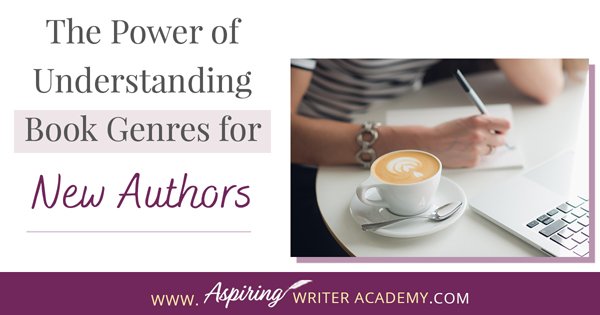
The Power of Understanding Book Genres for New Authors
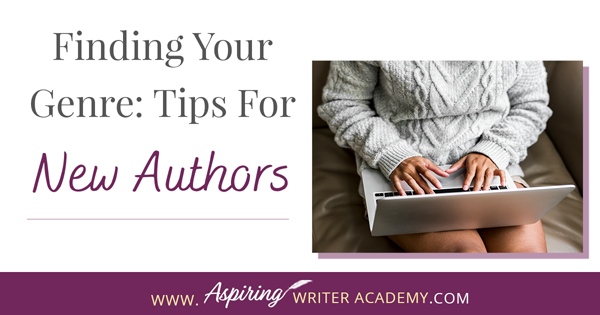
Finding Your Genre: Tips for New Authors
Do you find it difficult to create compelling antagonists and villains for your stories? Do your villains feel cartoonish and unbelievable? Do they lack motivation or a specific game plan? Discover the secrets to crafting villains that will stick with your readers long after they finish your story, with our How to Create Antagonists & Villains Workbook.
This 32-page instructional workbook is packed with valuable fill-in-the-blank templates and practical advice to help you create memorable and effective antagonists and villains. Whether you're a seasoned writer or just starting out, this workbook will take your writing to the next level.
Our Goal for Aspiring Writer Academy is to help people learn how to write quality fiction, teach them to publish and promote their work, and to give them the necessary tools to pursue a writing career.
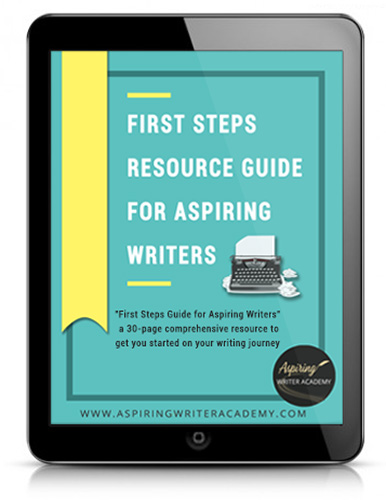
ENTER YOUR EMAIL
TO GET YOUR FREE
"First Steps Guide for Aspiring Writers" a 30-page comprehensive resource to get you started on your writing journey.
Other Blog Posts You May Like
Why We Started Aspiring Writer Academy: Our Story
50 Top Resource Books for Fiction Writers
3 Levels of Goal Setting for Fiction Writers
Fiction Writing: Office Supplies to Help You Prepare to Write Your Next Novel
Fiction Writing: 5 Key Differences Between a Novel and a Novella
Write Your First Novel: How Do You Start?
Do You Dream of Being a Published Author? (How Bad Do You Want It?)
Who is an ‘Aspiring Writer?’ 3 Tips to Escalate Your Career No Matter What Level You Are At
How to Write the Midpoint of Your Novel (and Avoid a ‘Saggy Middle’)
20 Items to Bring to Your First Writer’s Conference
How to Find a Great Story Idea in 4 Easy Steps
How to Write a Novel While Working Full Time
Slingshot Week: How to Set New Goals for Writing in 2023
The Pros and Cons of Writing Holiday Fiction (Collections & Anthologies)
Fiction Writing: How to Find a Critique Partner/Group











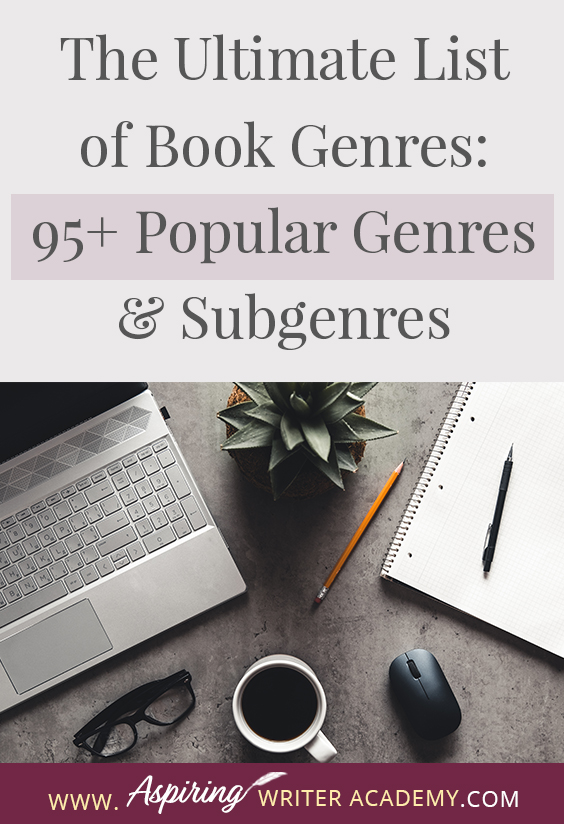
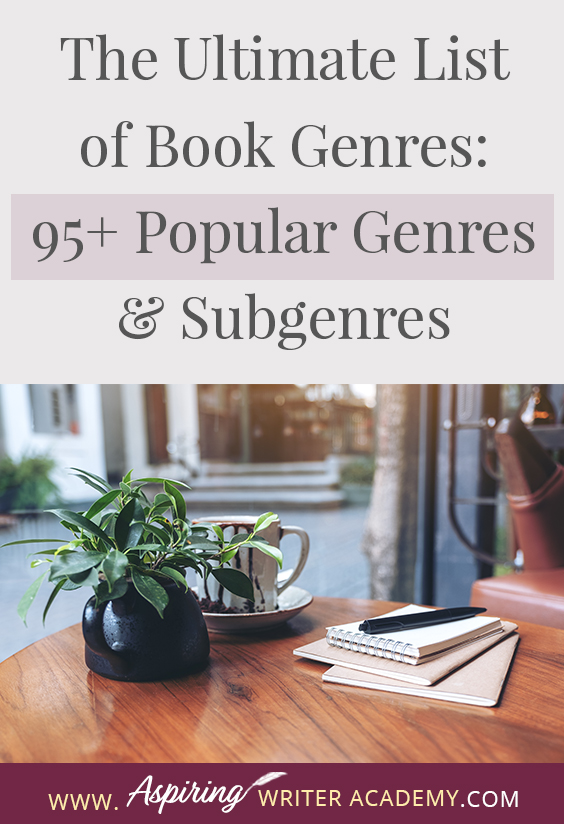
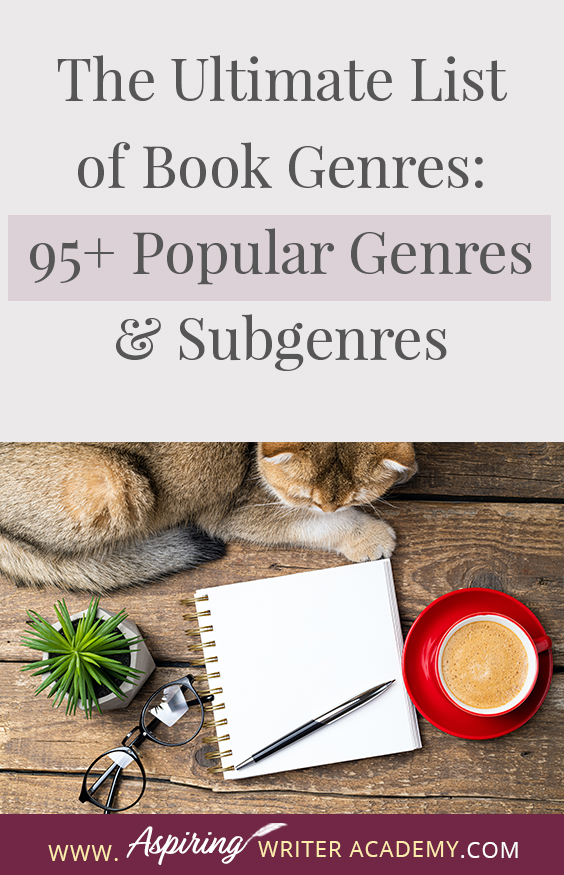

















![Death on the Nile [Movie Tie-in 2022]: A Hercule Poirot Mystery (Hercule Poirot Mysteries, 17)](https://m.media-amazon.com/images/I/41KyX5rEQ9L._SL500_.jpg)


























































